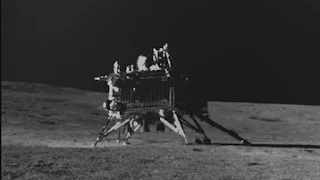"Optimal Lunar Population: Oxygen Availability and Sustainable Habitation"
"Exploring Lunar Living: Determining Optimal Population Size Based on Oxygen Availability"
"Explore the potential for human habitation on the Moon based on oxygen availability. Discover how advancements in technology and resource utilization could shape the future of lunar colonies and determine the optimal population size. Join us on a journey into the possibilities of life beyond Earth."
Lunar Habitation,
Moon Settlements,
Oxygen Availability,
Sustainable Living,
Lunar Colonies,
Population Size,
Space Exploration,
Lunar Resources,
Technology Advancements,
Human Respiration,
Future of Space,
Resource Utilization,
Space Technology,
Introduction:-
The prospect of establishing human settlements on the Moon has always been a topic of fascination and scientific curiosity. With recent advancements in space exploration and technology, the idea of a lunar colony is becoming increasingly plausible. One of the critical factors to consider in this endeavor is the availability of oxygen for sustaining human life. In this article, we'll explore the question of how many people could potentially live on the Moon if a sustainable oxygen source is found.
-:Oxygen on the Moon: Challenges and Possibilities:-
Unlike Earth, the Moon lacks a significant atmosphere and the abundant oxygen necessary for human respiration. Thus, for prolonged habitation, a dependable oxygen source is essential. Scientists and engineers are actively researching various methods to generate or extract oxygen on the Moon. One of the most promising approaches involves utilizing lunar regolith (the Moon's surface soil) to extract oxygen through chemical processes. This approach, if successful, could potentially provide the necessary oxygen for inhabitants.
-:Factors Affecting Lunar Population Capacity:-
The capacity for lunar habitation is influenced by a range of factors beyond oxygen availability. Some of the key considerations include:
1. Resources:-
The Moon's resources, such as water ice at the poles, could be used not only for oxygen production but also for sustaining life in terms of hydration and agriculture.
2. Technology:-
Advanced life support systems and closed-loop ecosystems would be required to recycle air, water, and nutrients efficiently, reducing the dependence on external supplies from Earth.
3. Habitat Infrastructure:-
The construction of habitats designed for safety, radiation shielding, and comfortable living would play a crucial role in determining the maximum population size.
4. Energy Source:-
A sustainable energy source, such as solar panels or lunar regolith-based energy production, is vital for powering the life support systems and other essential infrastructure.
-:Calculating Potential Population Size:-
Given the complexities of lunar living, accurately predicting an optimal population size is challenging. However, by considering the factors mentioned above, we can make educated estimates.
The carrying capacity of a lunar colony would likely start small, with a handful of astronauts and scientists testing the viability of the habitat and life support systems. As technology evolves and infrastructure improves, the population could gradually expand.
Estimates for the potential lunar population size vary widely. Some experts suggest that, with advanced technology and efficient resource utilization, a lunar colony could eventually support hundreds or even thousands of residents. However, it's essential to strike a balance between population growth and resource sustainability to prevent overloading the lunar ecosystem.
Conclusion:-
While the exact number of people that could live on the Moon if a sustainable oxygen source is found remains uncertain, the prospect of lunar habitation is exciting. Advances in technology, coupled with innovative approaches to resource utilization, could pave the way for a future where humans establish a presence beyond Earth. As we continue to push the boundaries of space exploration, the Moon stands as a promising candidate for humanity's next great adventure.




Comments
Post a Comment